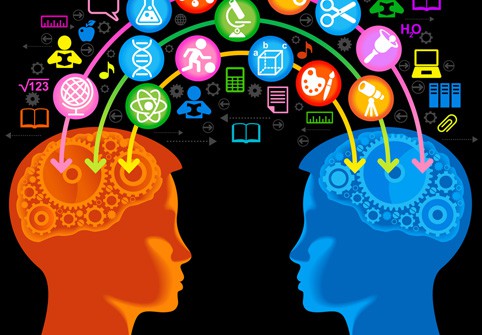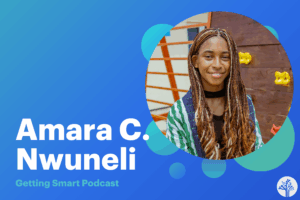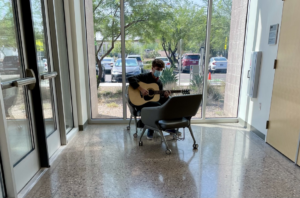Maps, Playlists, & Badges: Key Blended Learning Themes

On Tuesday we co-hosted OpenBlend, a blended learning conference with the Tacoma Public Schools and the Puget Sound Educational Service District (PSESD) featuring a full-day track of Khan Academy workshops as well as other innovative and open tools.
Khan Academy is known for its 3,100 instruction videos, but the full day series of workshops made it apparent that they are developing sophisticated examples of three key drivers to personalized and mastery-based learning:
- Knowledge maps: a picture of what to learn
- Customizable playlists: how to learn; and
- Show what you know: badges that recognize achievement.
A district administrator at the conference asked me how to get students to take more responsibility for learning. My response, make learning objectives clear and engage students in goal setting, give them choices about how to learn, and let them know how they can show what they know. Three drivers–maps, playlists, and badges–build agency and give students an opportunity to take ownership of their learning.
Just to be clear, I think playlists should include many different kinds of learning experiences and achievement recognition systems (badges and the like) should reflect multiple forms of assessment.
These three drivers will prove to be as important post-secondary and employability training as they will in K-12 (see JFF’s announcement on certification partnerships and ” 5 Lessons K-12 Could Learn From Skillshare“).
Charlie Bufalino gave South Sound educators a tour of Rocketship Education, the top performing high poverty elementary network in San Jose. “With blended learning every student achieves,” said Charlie. “The idea is to focus on individual student needs, when they. The key that drives this is individualized lesson plans.”
“The linkage between the classroom and the learning lab is at the core of successful [rotation model] blended learning programs,” added Bufalino. The connection is made by blended learning platform Junyo which provides single sign-on, common reporting, and learner analytics.
Charlie said, “We really want teaching to become a desirable profession, and blended learning offers a pathway for this.” By rotating students through a learning lab Rocketship can afford to pay teachers about 15 percent more. The learning lab also powers data-driven instruction. “The better and more accurate the data, the more strategically teachers can plan and teach,” added Bufalino.
There was a breakout on each of the three engaging and adaptive tools that power the Rocketship learning lab: Dreambox, ST Math, and i-Ready. Used separately or together with a common front end like Junyo or EdElements, each of these programs contribute to knowledge maps, playlists (or personal pathways), and achievement recognition systems.
“Effective classroom learning happens students are active and engaged,” said Nigel Nisbet ofMIND Research Institute, “and the same thing is true for online.” When asked about the teacher role during a learning lab with ST Math, Nisbet said, “Teachers get a flag by their students name when they start to struggle. At a glance they can see the students that need help in the lab. Suddenly teachers have a resource for teaching conceptually.”
TOSA Justin Talmadge demonstrated the flipped classroom on Edmodo, a free social learning platform. (See this blog about Mr. T’s tech leadership role in Snoqualmie Valley.) Each of the conference sessions had its own Edmodo code and conversation–a powerful way to make a conference more interactive and extend the conversation.
Karl Nelson, from the state superintendent’s office, discussed online learning opportunities that exist in Washington with multiple providers. Nelson also gave an overview of the state’s leadership role in making open resources widely available.
Time for a plan. In closing, I reminded the Washington educators that we have 23 months left to get ready for the 2014-15 school year when the rubber hits the road–online Common Core State Standards assessments. Most schools will need more access to technology. That makes it a good time to shift from print to digital instructional materials. And while you’re at that you may as we adopt a blended learning model that personalizes learning and extends the reach of talented teachers.
It’s time for school leaders to start a community conversation about the shift to personal digital learning. It’s time to build a plan in three or four phases that aligns community engagement, student access to technology, professional development for teachers, changes to the structure and schedule, and the infrastructure to make it work. A little outside funding helps a lot, but like the Mooresville example we discussed, most school plans will be supported by a series of budget realignments totaling about $1 per day, per student (see ouraccess white paper for more).
The next few months will tell if OpenBlend provided a blended learning kickstart for the Puget Sound region. It’s clear that the toolset gets better every month–which is good because we don’t have much time to wait.
MIND Research Institute and Curriculum Associates are Getting Smart Advocacy Partners. Edmodo is a Learn Capital company where Tom Vander Ark is a partner. This blog first appeared on EdWeek.







Susan Oxnevad
Tom, these are great ideas. I've recently offered a few suggestions on my own blog that compliment the ideas you have presented here.
3 Ways to Embrace Change this Year: http://d97cooltools.blogspot.com/2013/01/3-ways-to-embrace-change-this-year.html
Digital Literacy Badges: http://d97cooltools.blogspot.com/2012/12/badges-for-beye.html
Replies
Tom Vander Ark
great post Susan!